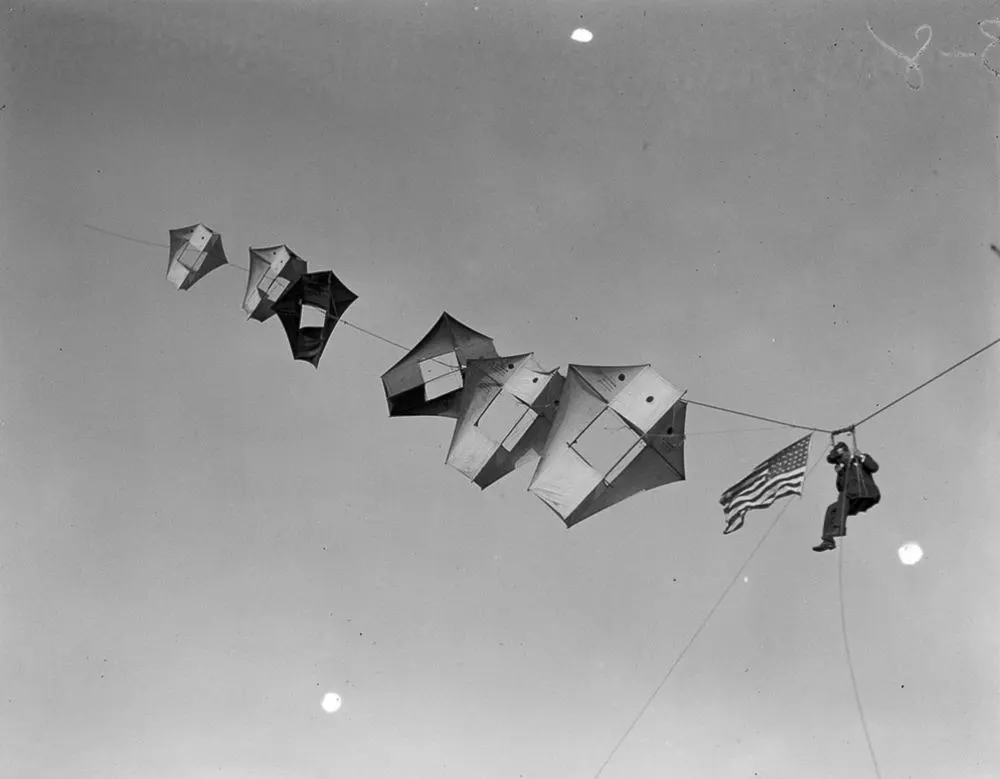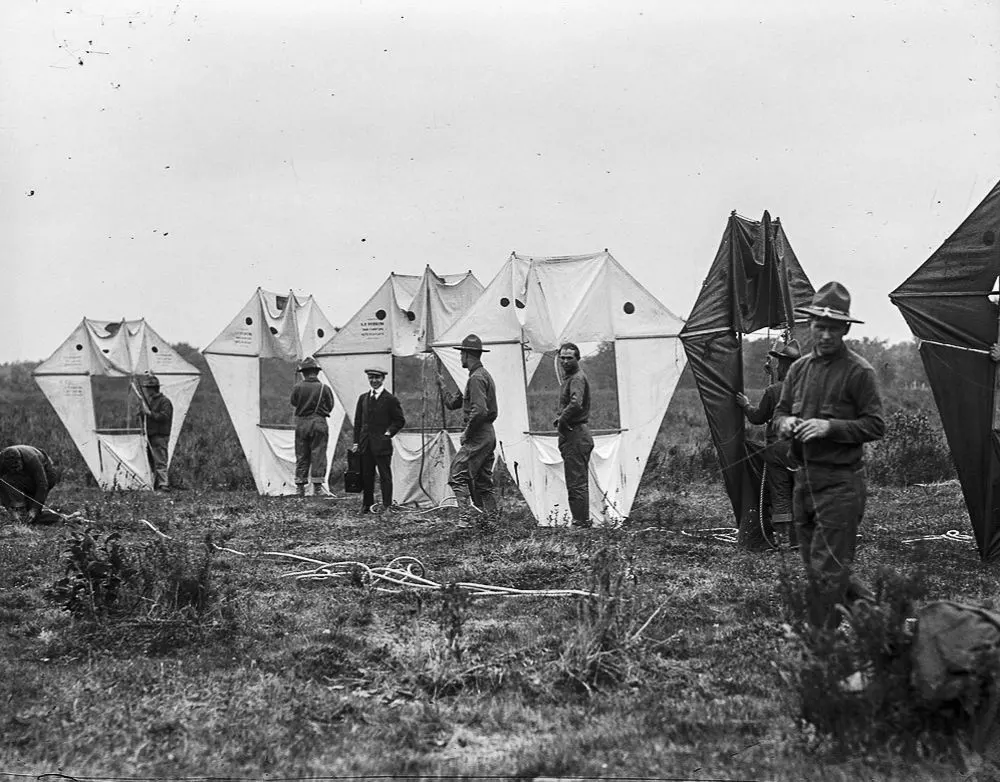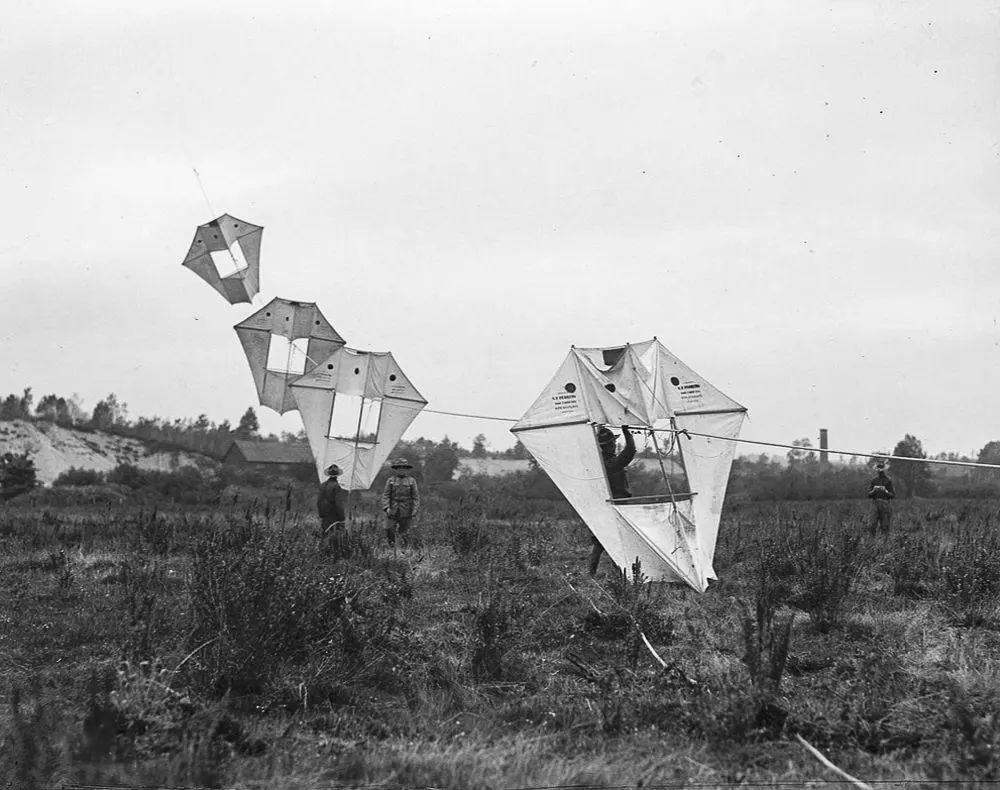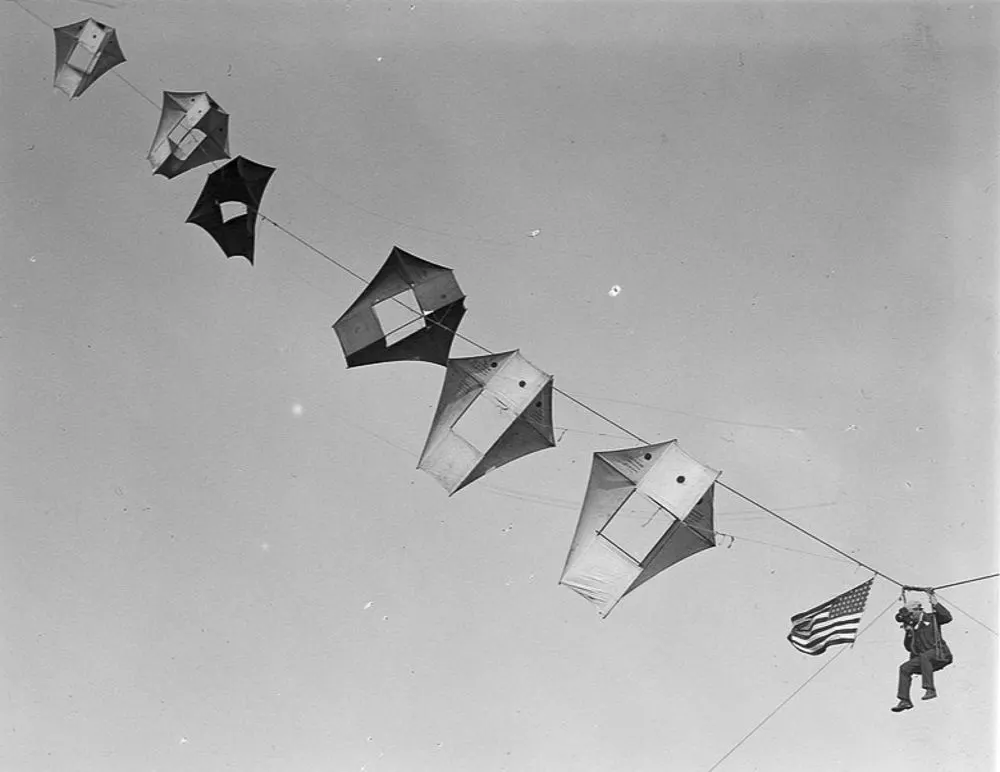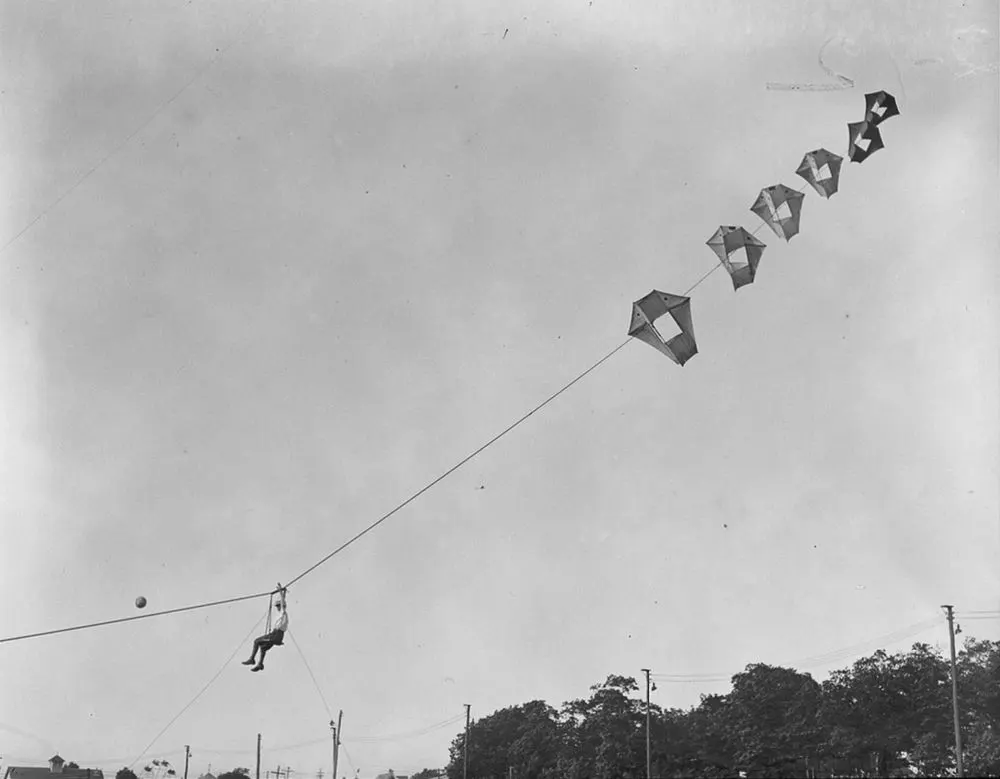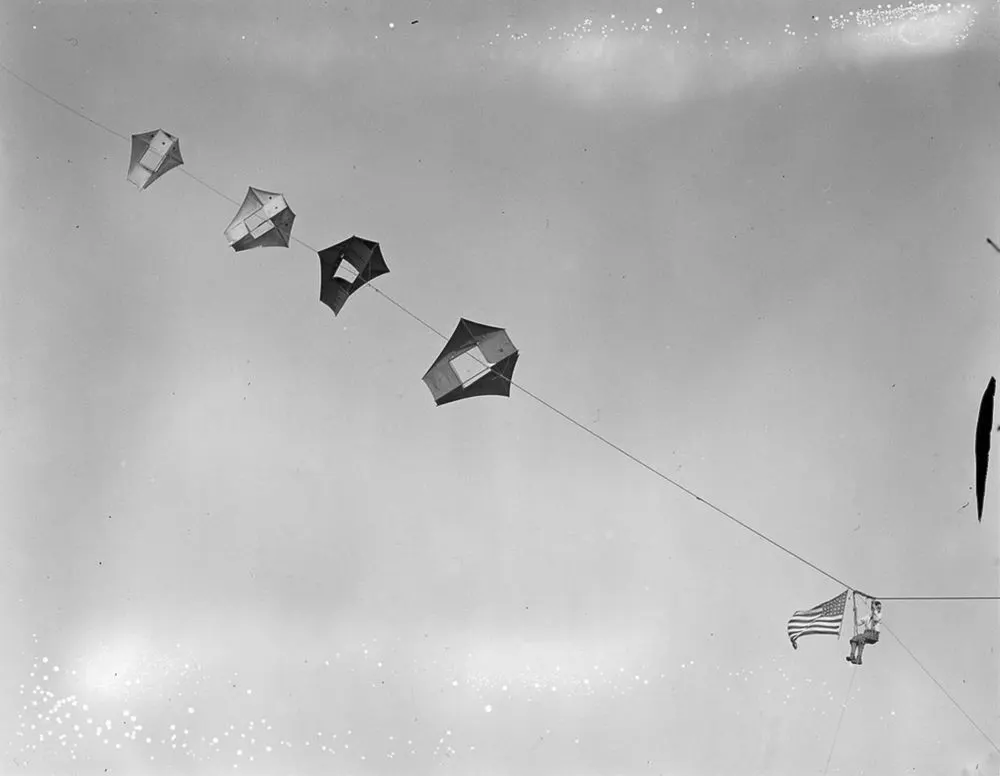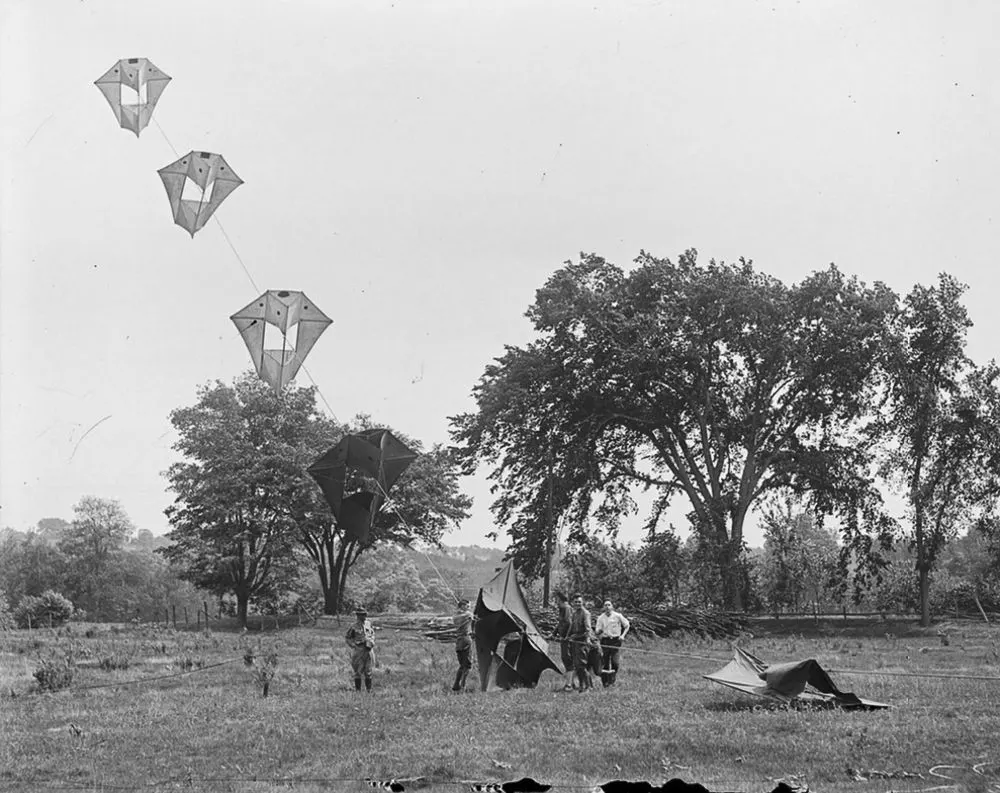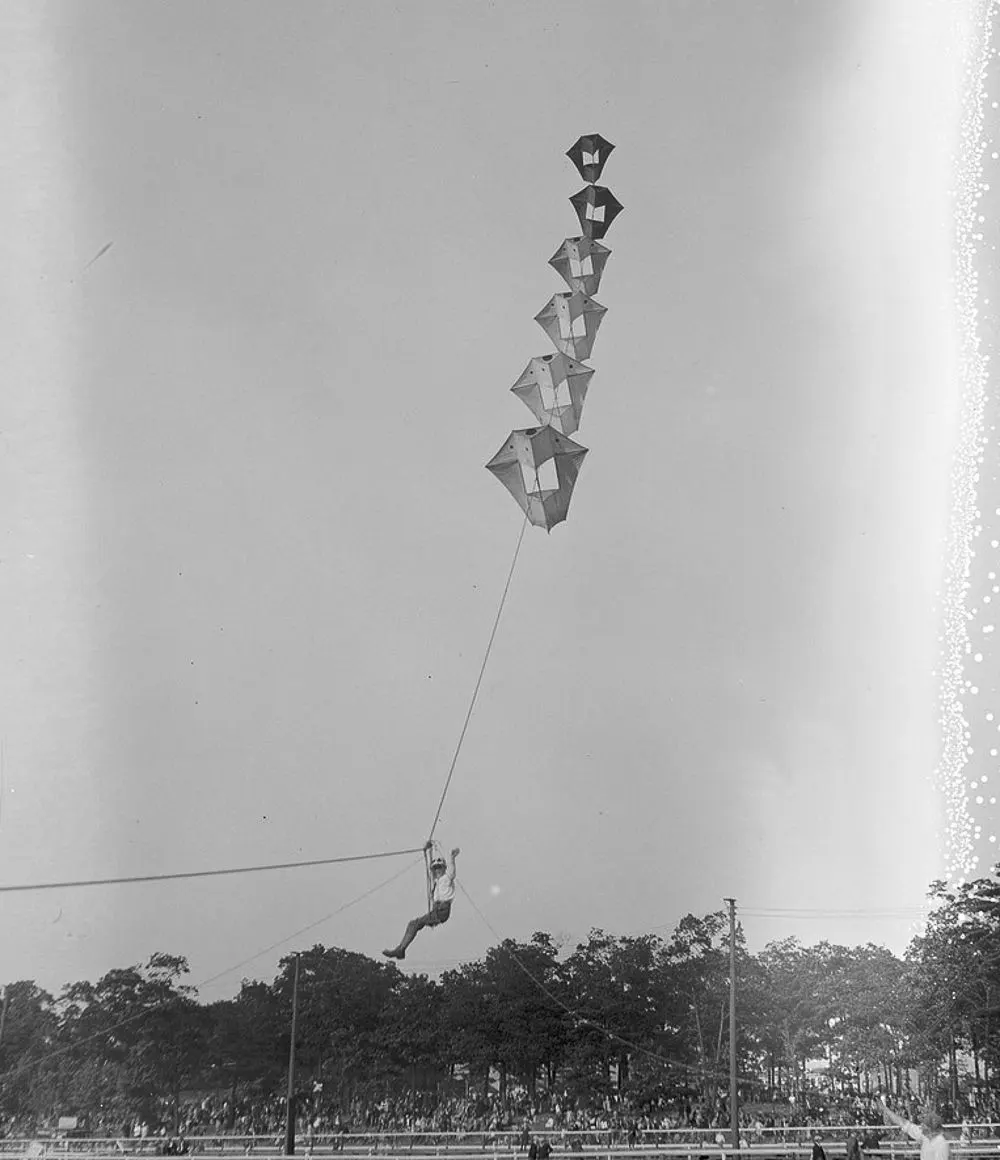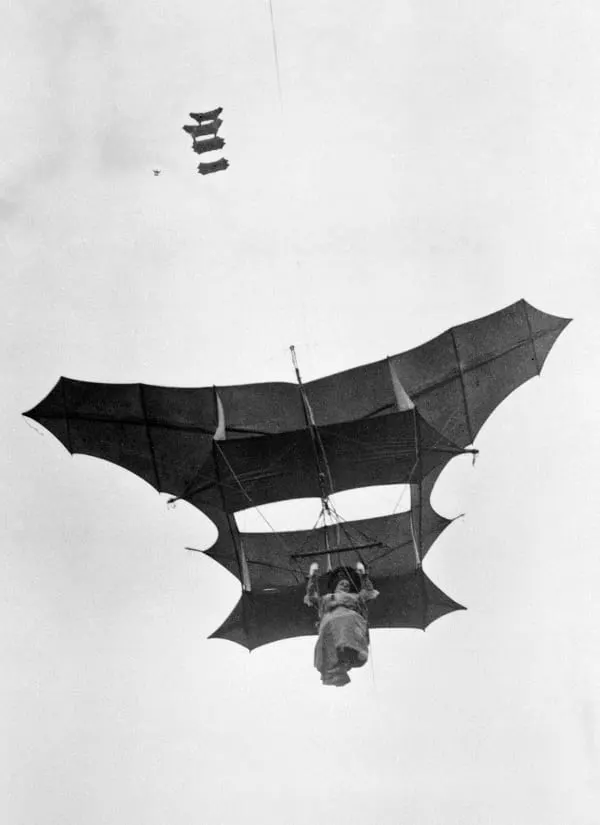Originally, the kites were used for pleasure and entertainment, and later on for aerial reconnaissance on the battlefield. Interest in their development declined with the advent of powered flight at the beginning of the 20th century. Recreational man-lifting kites gradually gained popularity through the latter half of the 20th century, branching into multiple sports. Man-carrying kites were used in ancient China, for both civil and military purposes and sometimes enforced as a punishment. The Book of Sui, dating from 636 CE, records that the tyrant Gao Yang, Emperor Wenxuan of Northern Qi executed prisoners by ordering them to ‘fly’ using bamboo mats. Stories of man-carrying kites also occur in Japan, following the introduction of the kite from China around the seventh century AD. In one such story, the Japanese thief Ishikawa Goemon (1558–1594) is said to have used a man-lifting kite to allow him to steal the golden scales from a pair of ornamental fish images which were mounted on the top of Nagoya Castle. His men manoeuvered him into the air on a trapeze attached to the tail of a giant kite. He flew to the rooftop where he stole the scales, and was then lowered and escaped. It is said that at one time there was a law in Japan against the use of man-carrying kites. In the early 1890s, Captain B.F.S Baden-Powell developed his “Levitor” kite, a hexagonal-shaped kite intended to be used by the army in order to lift a man for aerial observation or for lifting large loads such as a wireless antenna. At Pirbright Camp on June 27, 1894, he used one of the kites to lift a man 50 feet (15.25 m) off the ground. By the end of that year, he was regularly using the kite to lift men above 100 ft (30.5 m). Baden-Powell’s kites were sent to South Africa for use in the Boer War, but by the time they arrived the fighting was over, so they were never put into use. Lawrence Hargrave had invented his box kite in 1885, and from it, he developed a man-carrying rig by stringing four of them in line. On 12 November 1894, he attached the rig to the ground on a long wire and lifted himself from the beach in Stanwell Park, New South Wales, reaching a height of 16 feet (4.9 m). The combined weight of his body and the rig was 208 lb (94.5 kg). Alexander Graham Bell developed a tetrahedral kite, constructed of sticks arranged in a honeycomb of triangular sections, called cells. Bell and his team, the Aerial Experiment Association, also developed biplane structures and curved wing shapes. The group correctly predicted the reduced structural requirements would provide a better lift-to-weight ratio; large contemporary box designs increased in weight faster than their lift, but a tetrahedral kite could be expanded with a near-constant ratio. Samuel Franklin Cody was the most successful of the man-lifting kite pioneers. He patented a kite in 1901, incorporating improvements to Hargrave’s double-box kite. He proposed that its man-lifting capabilities be used for military observation. After a stunt in which he crossed the English Channel in a boat drawn by a kite, he attracted enough interest from the Admiralty and the War Office for them to allow him to conduct trials between 1904 and 1908. He lifted a passenger to a new record height of 1,600 ft (488 m) on the end of a 4,000 ft (1,219 m) cable. The War Office officially adopted Cody’s War Kites for the Balloon Companies of the Royal Engineers in 1906, and they entered service for observation on windy days when the Companies’ observation balloons were grounded. Like Hargrave, Cody strung up a line of multiple kites to lift the aeronaut, while greatly improving on the details of the lifting gear. He later built a “glider kite” which could be launched on a tether like a kite but then released and flown back down as a glider. The Balloon Companies were disbanded in 1911 and were reformed as the Air Battalion of the Royal Engineers, the forerunner of the Royal Air Force. Another system was developed by Boston kite maker Samuel F. Perkins used a lead kite to test wind conditions and then followed by additional kites to add lift until the string could support the weight of a man. The passenger, perched on a narrow seat, was then raised into the air while a ground crew manipulated winches and ropes to keep the system stable. However, the design was vulnerable and subject to plummeting with the caprices of the wind.
(Photo credit: Leslie Jones / Boston Public Library / Wikimedia Commons). Notify me of new posts by email.
Δ Subscribe
